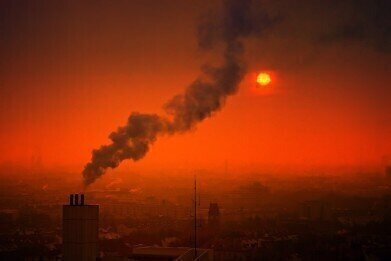Air Monitoring
What Pollutants Are Measured in the Air? - Particulate Matter
Jan 13 2022
Particulate matter – known as PM – for short, is one of the most common types of air pollution. It’s also one of the most dangerous to human health, which is why it has commanded significant media attention in recent years. Microscopic in size, it is capable of being inhaled and even infiltrating the bloodstream, where its effects on the human body are not yet fully known.
Generally speaking, there are two classifications of particulate matter: PM10 and PM2.5. The first is defined as any particle which is 10 micrometres or smaller in diameter and includes certain visible forms of pollution such as dust, mould and pollen. The latter refers to those which have a diameter of 2.5 micrometres or less, which is roughly 30 times smaller than a human hair and invisible to the naked eye.
Where does PM pollution come from?
PM differs from other forms of air pollution in that it does not refer to a single chemical or gas. Instead, it is a collection of many various types of contamination, some of which are a combination of hundreds of different chemicals. Most of these particles are created in the atmosphere after a reaction between existing pollutants (like sulphur dioxide (SO2) and nitrogen oxides (NOx)) and external forces, such as UV radiation from the sun.
However, some forms of PM are emitted directly from a single source, such as the air pollution generated at construction site or the smokestacks of an industrial facility. Meanwhile, the pressure exerted by tyres on unpaved roads and the chemicals sprayed onto agricultural crops can also contribute to PM levels in the air.
What are the harmful effects of PM?
Because PM is so small in size, it can be inhaled into the lungs and even absorbed into the bloodstream. Once present in the human body, it can wreak all sorts of damage on our internal organs, including respiratory complications, decreased lung function, asthma as well as irregular heartbeats and non-fatal heart attacks. In those who suffer from pre-existing cardiovascular and respiratory conditions, it is a leading cause of premature death.
As well as its deleterious effects on human health, PM can also cause or exacerbate a wide variety of environmental issues. These include (but are not limited to) the acidification of streams and lakes, nutritional imbalances in soil and water, damaged crops and wild flora, diminished biodiversity and acid rain events.
What is being done to tackle PM pollution?
The first step to overcoming any problem is fully understanding it, which is why particulate matter sensing for air quality measurements has become such a priority for governments and corporations in recent years. With a better handle on the primary sources of PM contamination, the authorities can provide vital information to the populace on pollution hotspots so that they can avoid them.
As for actually curbing PM levels in the air, transitioning from fossil fuels to renewable sources of energy is one of the chief ways in which concentrations can be reduced. In particular, the new stove regulations introduced by the EU will set a minimum standard for member states and the UK, reducing the PM pollution caused by heating and cooking activities.
Digital Edition
IET 34.2 March 2024
April 2024
Gas Detection - Biogas batch fermentation system for laboratory use with automatic gas analysis in real time Water/Wastewater - Upcycling sensors for sustainable nature management - Prist...
View all digital editions
Events
Apr 22 2024 Hannover, Germany
Apr 22 2024 Marrakech, Morroco
Apr 23 2024 Kuala Lumpur, Malaysia
Apr 23 2024 Kintex, South Korea
Apr 23 2024 Edmonton, AB, Canada


















